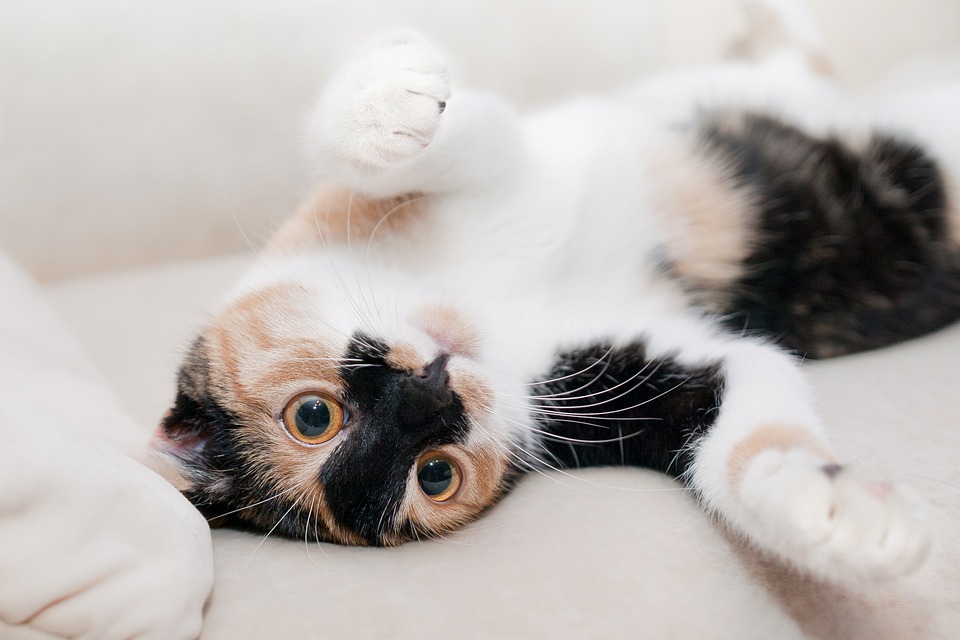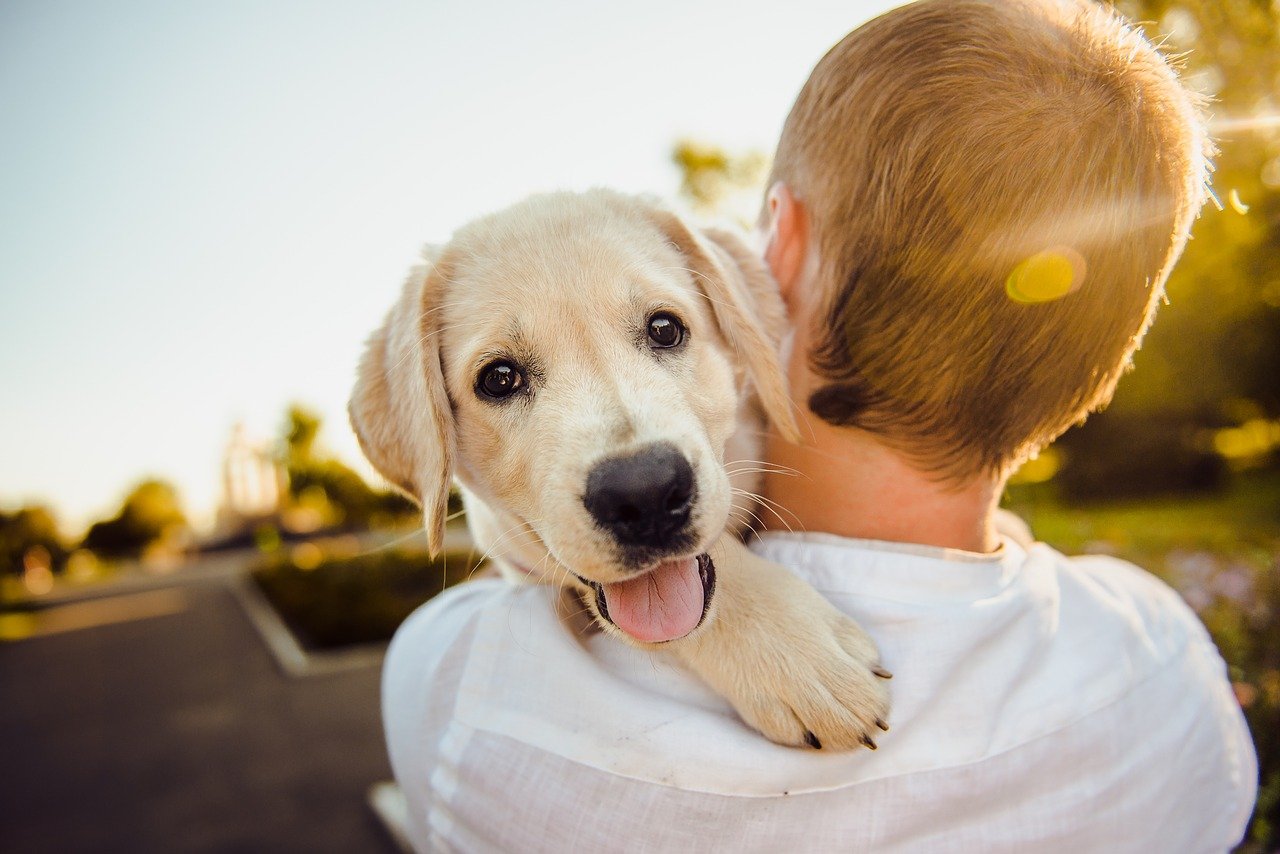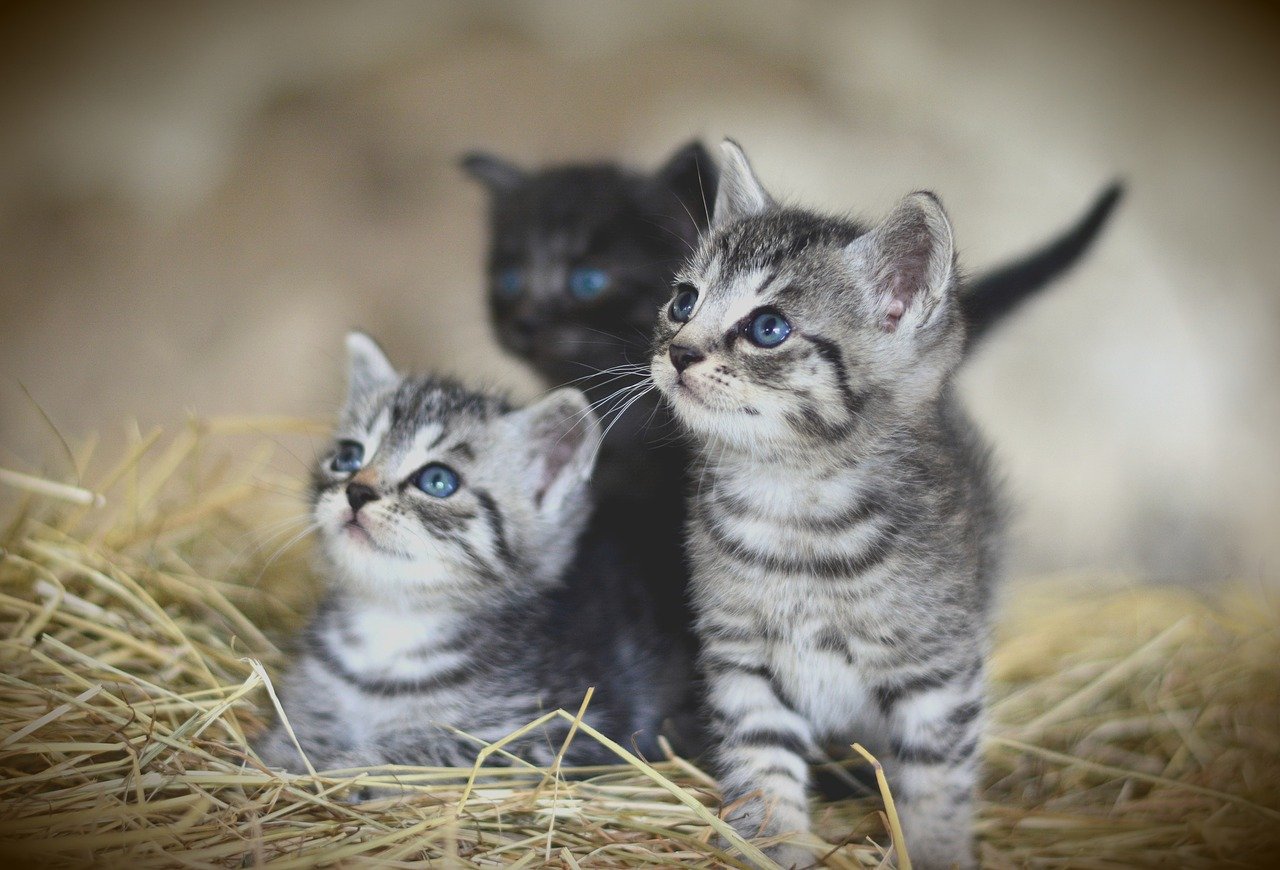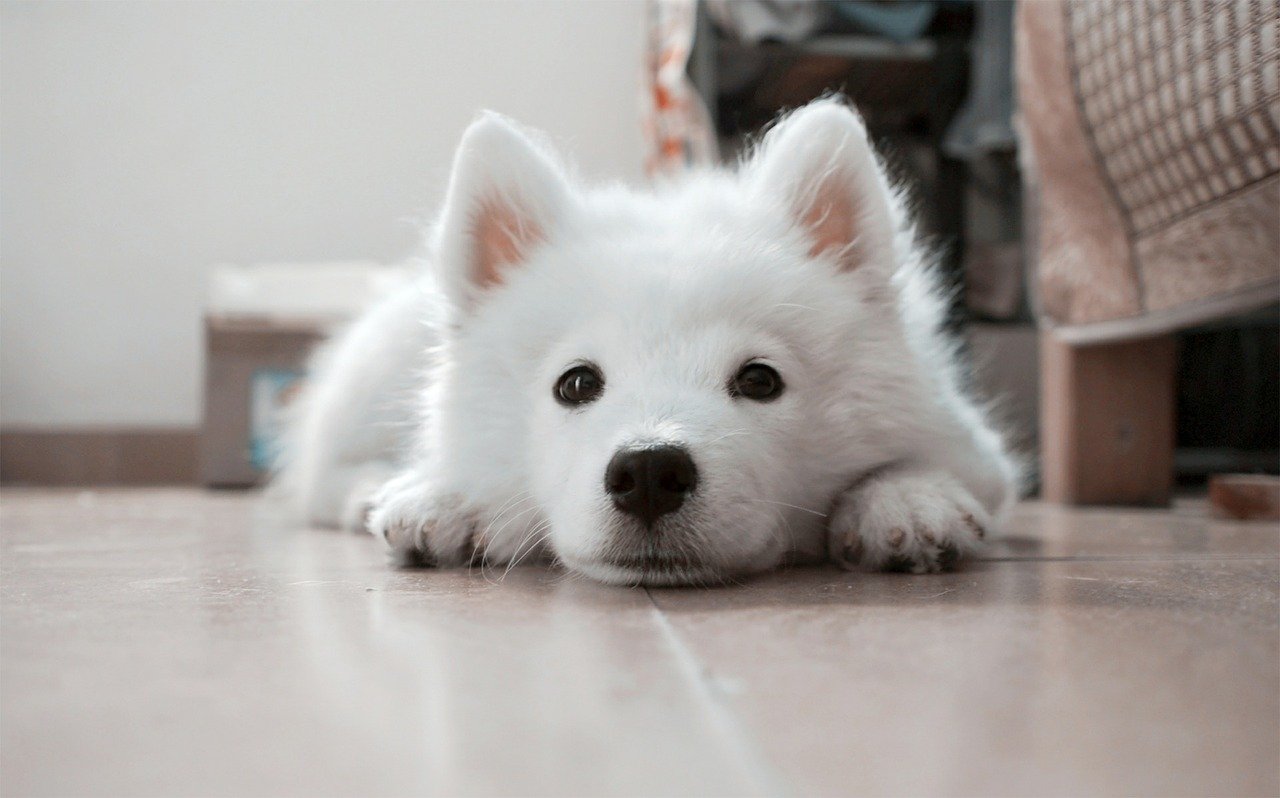Komondor, or Mop Dog - Top Info About Hungarian Sheepdog
The Komondor is definitely an eye-catching dog. It looks just like a mop – thanks to the cord-like fur formed into dreads. Dogs of this breed are exceptionally intelligent and caring. But are they animals for just anyone? What is the Komondor – the mop dog like, and does it need special attention from the owner? Check the most important details about the Hungarian sheepdog.
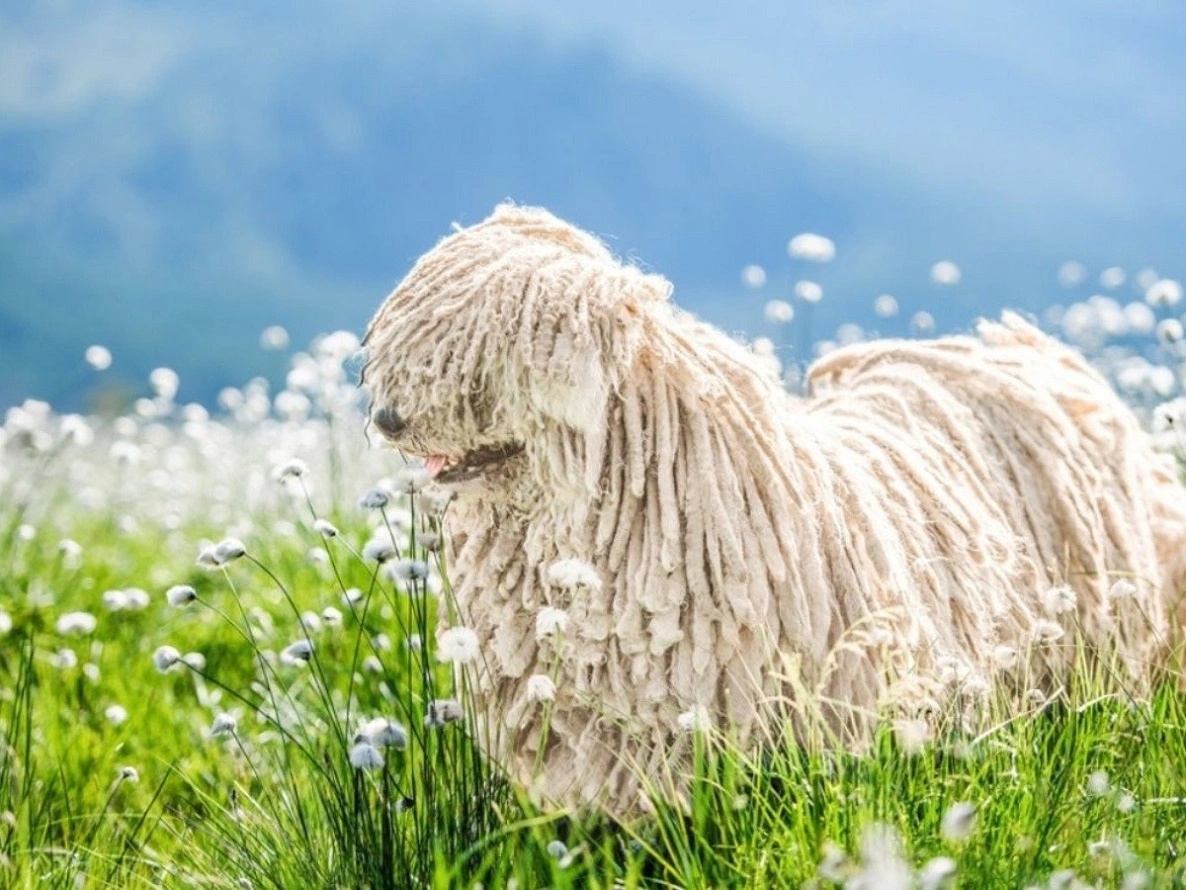
The Komondor – history and origin
The Komondor (not Commodore, which is a computer) dog has its origins in regions of Asia. The breed was brought to Europe by wandering merchants who sought places to sell their products. But the currently known breed standard originated in Hungary. As estimated, it was officially accepted around 1924. But the first mentions of these dogs are difficult to date. The breed has wandered around the world over the years – for this reason, it’s hard to establish any details about it.
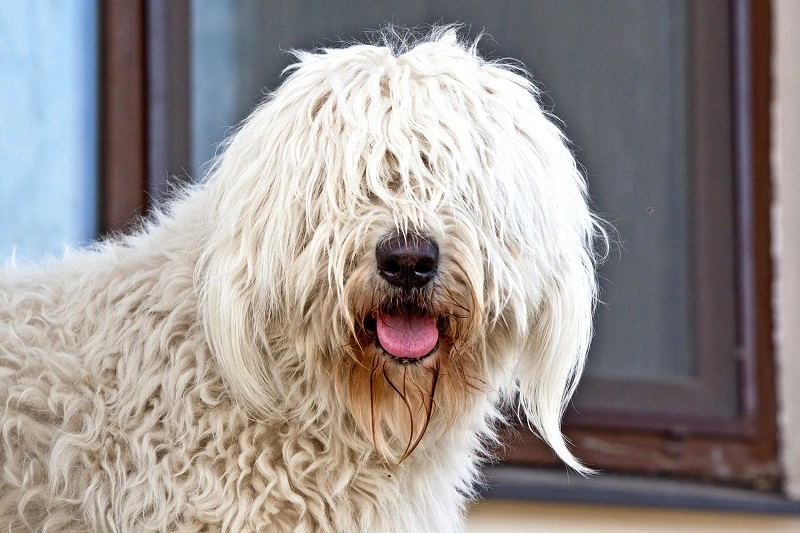
The Komondor – a dog of unusual appearance
The Komondor, also known as the Hungarian sheepdog, is a dog from the shepherding breeds. Adult male Komondors grow up to about 70 cm (2.3 ft) tall. Females are slightly smaller, and their height at withers is about 65 cm (2.1 ft). The correct weight of a male Komondor dog is 50-60 kg (110-132 lb). Females are lighter and weigh from 40 to 50 kg (88-110 lb) on average.
The breed’s popularity results mostly from the characteristic hair, which looks like braids, dreads or as some say – a mop. The Komondor has a coarse coat. But there is a delicate underfur underneath. Komondor puppies are covered with short, curly hair. As the dog matures, the fur turns into dreads. According to the breed’s standard, the Komondor has only one basic color – white with a shade of ivory. There are no black Komondors.
The Komondor’s body build is very proportional. The upper part of its body is relatively wide and muscular. Because of this (and the fur), the Hungarian sheepdog is seemingly an enormous animal.
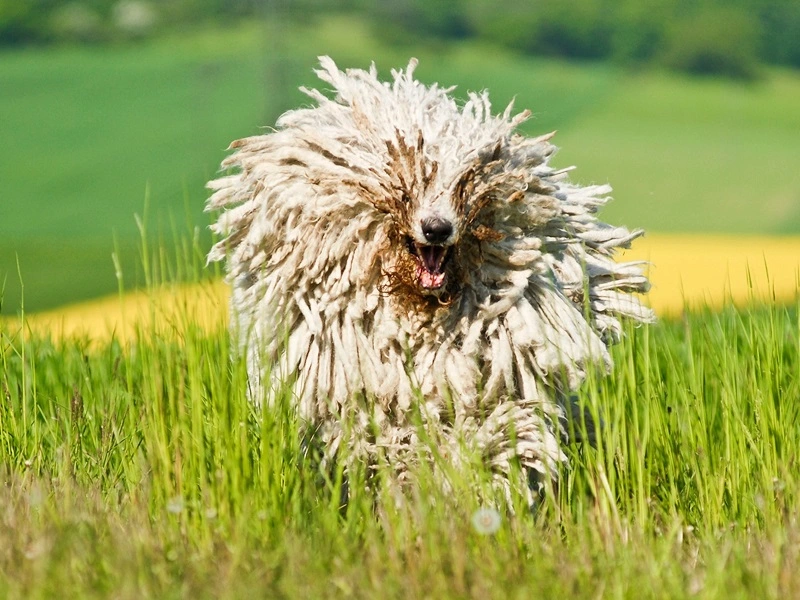
The Komondor dog – temperament
The Komondor is a clever and brave dog. The breed is considered to be highly territorial, which makes these dogs perfect guards of a property – they don’t tolerate strangers. The Komondor spends most of the day on resting and lying down, but it remains highly concentrated and observes the area all the time. The breed is not aggressive. The Hungarian sheepdogs are very active at night that’s when they check their territory in search of any unwanted guests.
The Komondor is a perfect family dog. All family members can feel safe in its company. It treats its caregivers just like family. Also, it’s friendly – and the most protective – towards children.
Is the Komondor a dog for everyone?
The Komondor is not the best breed for people who have never taken care of dogs before. Hungarian sheepdogs are not only physically powerful, but also strong in character, with a tendency to dominate. Without a consistent approach, one might become a threat both for themselves and the dog. Komondors are recommended for people who are able to properly shape the dog’s character, or who decide to regularly and consistently attend training classes with professionals.
The breed is not the best option for apartment living. The Komondor needs enough space to move around and patrol its area.
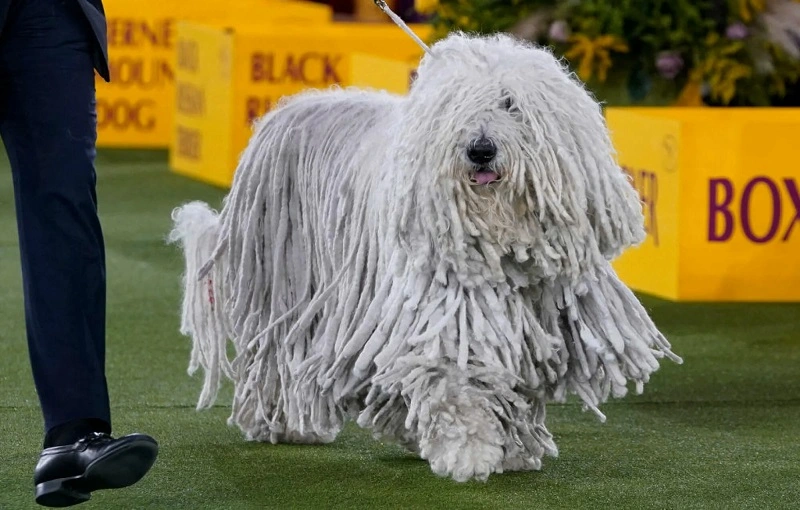
The Komondor – training
The Hungarian Komondor requires proper attitude and training. The socialization process should begin in puppyhood. Getting help from professional dog training services is a perfect idea.
The training is a challenging process, as the dog like to dominate. Using any form of violence or too strong persuasion is absolutely forbidden. The Komondor will obey only someone with a strong personality and consistent approach.
Does the Komondor dog need any special diet?
The Hungarian sheepdog requires a diet consisting of wet and dry food at a 1:1 ratio. Dry food provides high doses of energy, but also helps the dog remove plaque and improve blood circulation in the gums. Wet food given to the dog is a perfect way to keep the dog’s ideal body shape, as it’s less calorific than the dry variant. It’s recommended to feed the dog with complete food designed for large dog breeds.
Remember to dose the food to match the animal’s age. Puppies require more attention from their caregivers, and more frequent feeding. It’s recommended to continue the diet started by the breeder, and then gradually change the type of food. Adult and elderly dogs need less frequent meals, but they still should be well-balanced.

The Komondor – grooming
The Komondor requires taking care of its fur. But cleaning it is not as demanding as it might seem, as the dog doesn’t have to be brushed. The characteristic appearance of the hair appears when the dog gets 7-8 months old. From this point, one should begin splitting the fur, thanks to which distinct dreadlocks appear. It should be done regularly. When the dog gets about 7-8 years old, the hair is thick and long enough to reach the floor. It means one has to remove any dirt sticking to the fur.
As for other elements of care, the owner should brush the dog’s teeth every day, and give the dog various teeth-cleaning snacks. Also, control the Komondor’s ears once a week, and check its claws biweekly, trimming them as needed.
The Komondor dog – diseases
The Hungarian Komondor is a strong and resilient breed – it’s thanks to the environment it originally comes from, as well as the type of work it performs every day. The dogs were originally used for herding cattle and sheep in mountainous regions. For this reason, the breed is not afraid of rain and low temperatures.
The Komondor, just like other big dogs, might suffer from issues with its motor and digestive systems. Hip dysplasia and gastric volvulus are the most common problems.
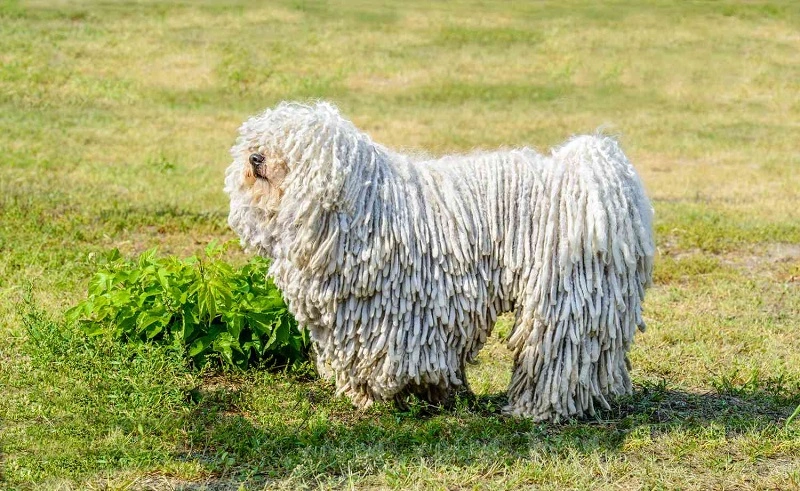
The Komondor dog – lifespan
The Komondor is a relatively long-living breed. As estimated, the average lifespan of these dogs oscillates around 10-12 years. Of course, it’s a highly individual matter. The conditions the dog lives in, its diet and any diseases it suffers from are important factors affecting the dog’s life length.
The Komondor puppy prices
The Hungarian sheepdog is considered a rare breed, which affects the prices. How much does a Komondor dog cost? You might have to pay from $800 to over $1,300 for a Komondor puppy. The price depends on the breeder’s reputation, as well as the animal’s pedigree. Because these dogs are relatively popular, you might have to wait by entering a puppy waitlist.

📍 What does the Komondor look like?
The Komondor is a large dog of a strong and muscular silhouette. The dog's fur resembles braids – it's the breed's characteristic feature. A shaved Komondor is a rare sight, as the fur protects the dog from cold and water when it's raining.
📍 Is the Komondor difficult to groom?
Contrary to the popular belief, the Komondor is very easy to take care of. Its characteristic, full of dreads fur doesn't require brushing. But it has to be regularly detangled. A few-years-old dog has fur long enough to catch small elements – they have to be removed.
📍 Why do Komondors have dreads?
The mop-like fur is a characteristic trait of the Komondor dog. It's not only a decorative, but also protective element. The characteristic look begins forming when the dog is about 7-8 months old.
📍 How much does the Komondor mop dog cost?
The Komondor is a rare breed. Because few breeders keep these dogs, the prices range from $800 to over $1,300. The price depends on the breeder and the dog's pedigree.
Featured articles
Maybe you're interested

